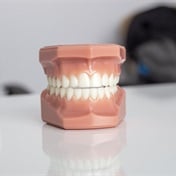A trip down the bread aisle nowadays is nothing short of confusing for most consumers. It seems the variety in shape, sizes and composition is forever increasing.
The manufacturers use healthy marketing terms such as “whole grain”, “multigrain”, “wholewheat” and "Low GI”, making it difficult for consumers to know if they’re making a wise choice.
It’s advisable to look beyond the health claims on the packaging and rather study the nutritional information as displayed on the back of the product. By doing this, you will know what the bread contains and how it compares with other breads on the market.
Whole is key
When choosing a bread, always choose the wholegrain option. Wholegrain products contain the entire grain. This includes the endosperm, germ, (provides protein and a variety of vitamins and minerals) and the outer layer called the bran (providing fibre).
But why are whole grains important?
The consumption of wholegrain foods has been shown to reduce the risk of heart disease, diabetes, certain cancers and may also help prevent obesity.
What is the difference between wholewheat and wholegrain bread?
Wholewheat bread does not have all three parts of the grain kernel in the same quantities as wholegrain bread. Some of the germ and bran have been removed. Wholegrain breads are healthier and much heavier than wholewheat breads due to their higher fibre content. They also contain more vitamins, minerals and phytonutrients.
What do the other terms like 'multigrain', 'enriched' or 'stone ground' mean?
- Multigrain: This type of bread contains more than one grain (e.g. wheat, rice, and corn) and may not contain the whole grain or much fibre.
- Enriched: These are usually white or wholewheat breads that have vitamins and minerals (normally iron or B vitamins) added after the refining process.
- Stone ground: This term refers to a type of grinding the grain undergoes, but doesn’t necessarily mean whole grain.
Tips to help you make the best choice when shopping:
1. Read the label
When analysing breads, the key features to check for are the overall kilojoule content; the carbohydrate content; and most importantly, the fibre content per 100g bread.
2. What's actually in there?
You can’t rely on the marketing slogans on the packaging when choosing bread. You have to look at the list of ingredients. By law, a food manufacturer must list ingredients in descending order based on their weight. This means that the first ingredient is the most abundant.
Look for bread made with wholegrain wheat flour, wholegrain corn, whole rye, whole oats, wheat germ, amaranth, barley, buckwheat, millet, spelt, quinoa or bulgur wheat. This should be number one on the ingredient list.
3. Don't be swayed
Don't be impressed by terms like "multigrain", "stone ground", "wholewheat", “enriched”, "bran" or "brown" or "low GI", as these terms do not mean that the bread contains the whole grain. These are just ways to create the impression that the bread is healthy.
4. Focus on fibre
An adequate fibre intake is essential to optimal gut health. Poor gut health has been linked to the development of a variety of chronic diseases such as obesity, inflammation, cardiovascular disease, type 2 diabetes and even some mental conditions. The recommended fibre content is six grams of fibre or more per 100g of bread. The fibre comes from the outer bran layer that is left intact in whole grains.
According to the American Dietary Guidelines, you should aim for 25–35 grams of fibre per day, and half of your daily fibre intake should come from a variety of whole grains.
5. Serving size matters if you are watching your weight
Bread slices come in many sizes and weights. On average, a slice of bread ranges from 20 to 35 grams of carbohydrates per slice. Look at the nutritional label to find out how many grams in a slice of bread, as this may help you to decide which is best for you. Bread manufacturers are now slicing bread more thinly to assist consumers with portion control. General wisdom dictates that in order to lose weight one should not eat too much bread.
Below is the nutritional profile of a number of breads:




 Publications
Publications
 Partners
Partners

















